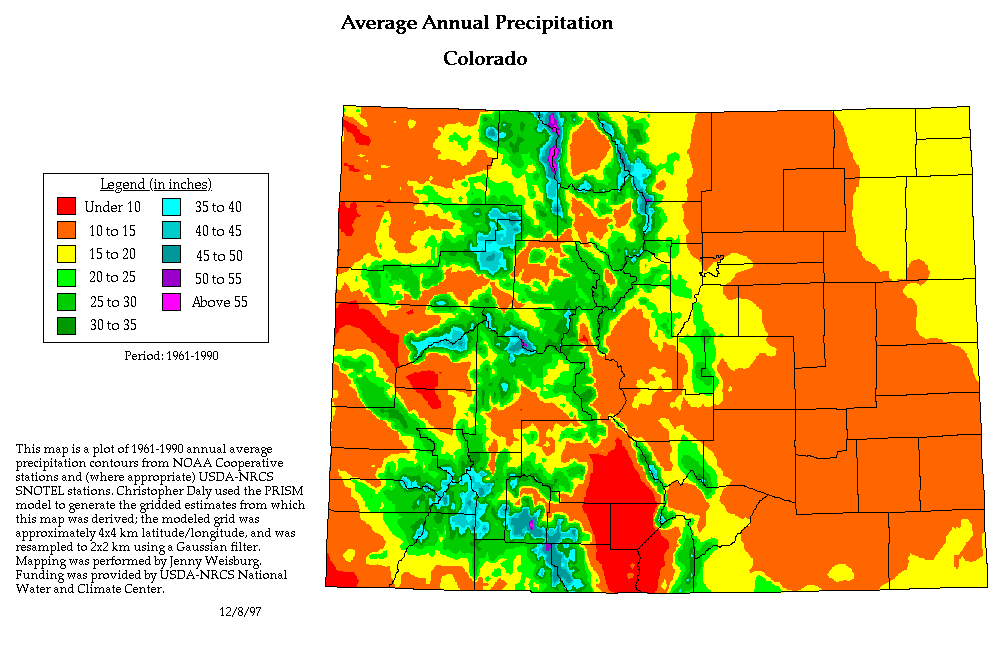

The hottest year on record was 2012, with an average temperature of 48.3☏, which was 3.4☏ above the long-term average. Since 2000, the state has experienced the highest summer and spring average temperatures in the historical record (Figures 2a and 2b). Temperatures in Colorado have risen about 2.5☏ since the beginning of the 20th century (Figure 1) and have remained consistently higher than the long-term (1895–2020) average since 1998. Less warming is expected under a lower emissions future (the coldest end-of-century projections being about 2☏ warmer than the historical average green shading) and more warming under a higher emissions future (the hottest end-of-century projections being about 11☏ warmer than the hottest year in the historical record red shading).

Historically unprecedented warming is projected during this century. Observed temperatures are generally within the envelope of model simulations of the historical period (gray shading). Shading indicates the range of annual temperatures from the set of models. Temperatures in Colorado (orange line) have risen about 2.5☏ since the beginning of the 20th century. Projected changes for 2006–2100 are from global climate models for two possible futures: one in which greenhouse gas emissions continue to increase (higher emissions) and another in which greenhouse gas emissions increase at a slower rate (lower emissions). Figure 1: Observed and projected changes (compared to the 1901–1960 average) in near-surface air temperature for Colorado.


 0 kommentar(er)
0 kommentar(er)
